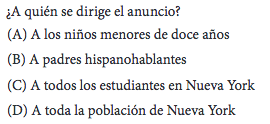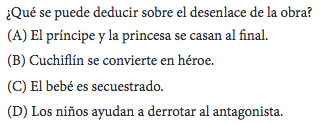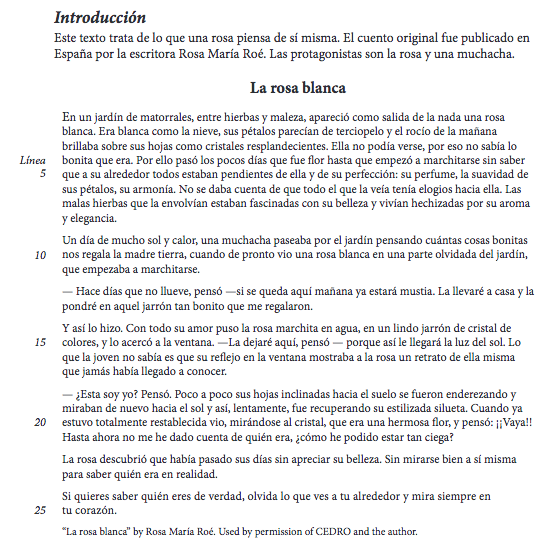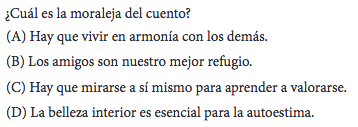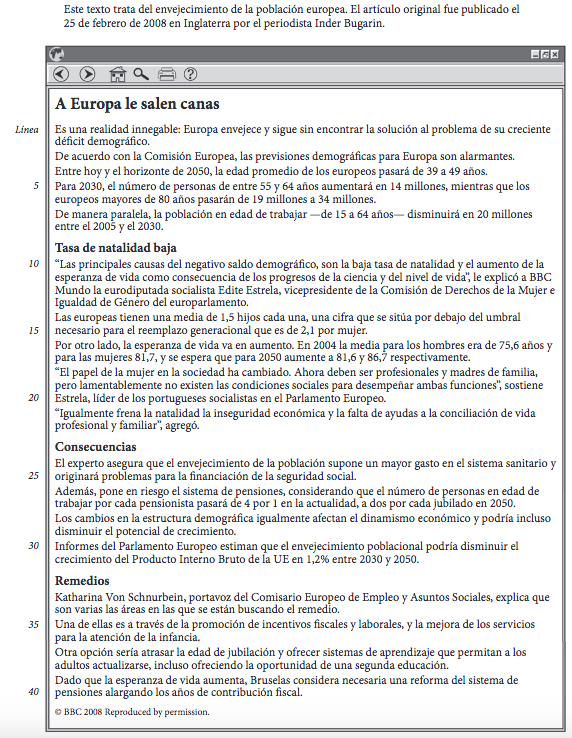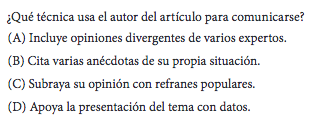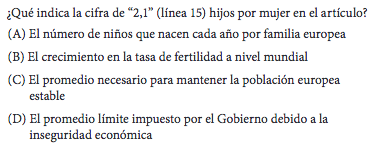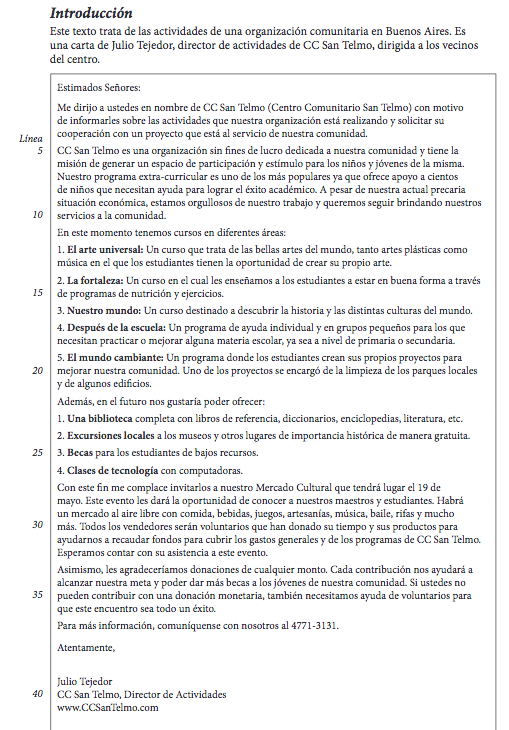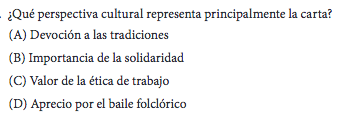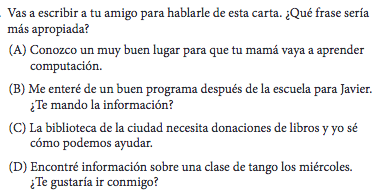10 Hardest AP Spanish Language and Culture Questions
What’s Covered:
- How Will AP Scores Impact My College Chances?
- Overview of the AP Spanish Language and Culture Exam
- 10 Hardest AP Spanish Questions
- Final Tips
Preparing for any AP exam can be overwhelming, but it can be especially difficult to know how to study for the language exams. The AP Spanish Language and Culture exam actually tends to have a higher passing rate compared to other AP exams – in 2020, 90% of students received a passing score, with 30.5% of students receiving a score of 5. But, this doesn’t mean the exam is easy. The test requires you to answer multiple choice questions, write short and long answer responses, and even provide a spoken response.
In this post, we’ll cover some difficult AP Spanish Language and Culture practice questions, with detailed explanations on how to answer them!
How Will AP Scores Impact My College Chances?
AP classes look great on college applications as a demonstration of course rigor and evidence that you’re challenging yourself. But your AP scores have little impact on your college chances – in fact, most college applications don’t require you to report your scores. For example, the Common Application has an optional section to report AP scores.
Just because AP scores don’t factor heavily into decisions, this doesn’t mean you shouldn’t aim for a high score. Depending on the school, high-enough scores (usually a 3 or a 4) can mean you get credit for or test out of introductory college courses. This can save you a lot of time and money!
To see how your AP classes affect your chances of admission, check out CollegeVine’s free Admissions Calculator, a tool that evaluates your odds at specific schools by taking into account your GPA, test scores, extracurriculars, and demographics.
Overview of the AP Spanish Language and Culture Exam
The AP Spanish Language and Culture exam will only be offered on paper in 2021.
The paper administration is held on May 11, May 21, and June 4, 2021:
- Section IA: Multiple Choice
- 30 questions (40 minutes), 23% of exam score
- Section IB: Multiple Choice with Audio
- 35 questions (55 minutes), 27% of exam score
- Section IIA: Free Response Written
- 2 questions (1 hour 10 minutes), 25% of exam score
- Section IIB: Free Response Spoken
- 2 questions (18 minutes), 25% of exam score
In addition to having a strong command of the Spanish language, the exam will expect you to understand the following themes:
- Families and Communities
- Personal and Public Identities
- Beauty and Aesthetics
- Science and Technology
- Contemporary Life
- Global Challenges
The test requires you to analyze print and audio sources, and use that information to either answer multiple-choice questions or construct your own responses (both written and verbal).
10 Hardest AP Spanish Language and Culture Questions
1.
Answer: B
The question is asking who the announcement is addressing. Because the passage emphasizes the word “niños,” you might be tempted to pick option A. But, if you pay close attention to the title of the text, “Traiga a sus niños…,” you’ll see that the pamphlet is directing readers to bring their children. This indicates that it is directed towards the parents of the children, rather than the children themselves. So, the correct answer in this case would be B.
2.
Answer: D
This question is asking about the conclusion of the theater show. If we look at the first paragraph, we can find a description of the show. This can be summarized as follows:
The evil Cuchiflín wants to kidnap the baby of a prince and princess, but with the help of some kids, the baby and the kids manage to foil Cuchiflín’s plot and become heroes.
From this summary, options B and C are clearly incorrect. Answer choice A might be correct, but the conclusion can’t necessarily be reached from the information given in the text. So, choice D is the most logical answer.
3.
Answer: A
To understand the meaning of “marchitarse,” let’s take a look at the sentence as a whole: “Por ello pasó los pocos días que fue flor hasta que empezó a marchitarse sin saber que as su alrededor todos estaban pendientes de ella y de su perfección…” Even if we don’t know the definition of “marchitarse,” we can use process of elimination and context clues to determine the correct answer.
First, we can eliminate answer choice B, since the girl hasn’t entered the garden yet. Similarly, answer choice D doesn’t make sense since the flower is not being taken out of the garden yet. So, we need to choose between A, the wilting of the rose, or C, the attitude of the other flowers towards the rose. Since the sentence states “empezó a marchitarse,” the reflexive pronoun “se” indicates that the verb “marchitar” applies to the rose itself. So, option A makes more sense than C.
To confirm that choice A is correct, we can look at line 14, where it says, “Con todo su amor puso la rosa marchita en agua.” Because “marchita” referring to “withered” also makes sense in this context, answer choice A should be the correct answer.
4.
Answer: D
Questions that don’t point you to a specific place in the text can be difficult. In this case, to observe the girl’s attitude towards the rose, we can again look at line 14: “Con todo su amor puso la rosa marchita en agua.” The phrase “con todo su amor” demonstrates the girl’s loving and caring attitude towards the rose, so D is the best choice.
5.
Answer: C
To figure out the moral of the story, it’s usually helpful to focus on the last few sentences of the passage. Particularly, we can look at the last sentence of “La rosa blanca,” which states, “Si quieres saber quién eres de verdad, olvida lo que ves a tu alrededor y mira siempre en tu corazón.” Essentially, the last sentence is talking about looking inwards to truly know yourself.
From this sentence, we can see that the answer is most likely C or D. But, answer choice C is a more close match than answer choice D, since the story deals with looking internally to realize self-worth.

[amp-cta id="9459"]
6.
Answer: D
This question is asking about the author’s technique. We’ll need to consider the article as a whole. An easy way to do this is to look at the section headers. For this passage, we have “Tasa de natalidad baja,” which gives statistics about the low birth rate. The next section deals with the consequences and the final section gives solutions to remedy the situation.
Since the author offers lots of data and statistics to back up their claims, answer choice D is the best option. This question is an example of how taking a moment to briefly summarize each section gives you a better idea of the organization and flow of the passage overall. In this case, reading the entire passage would be a waste of valuable time.
7.
Answer: C
This question is asking what the “2,1” represents within the passage. If we look at lines 14 and 15, the passage states that European women have 1.5 children each, on average, which is below the necessary number for generational repopulation, 2.1. So, the figure 2.1 symbolizes the number of children per woman necessary for generational repopulation.
This means that answer choice C is correct since it claims that 2.1 is the average necessary to maintain a stable European population. This question highlights the importance of reading carefully, since choice A describes the meaning of “1.5,” which also appears in the sentence we’re looking at.
8.
Answer: D
For this question, we’ll need to take a look at the table. When dealing with informational graphics, make sure to pay close attention to labels and headings. This table shows the birth rate in Spain over the last decade. For each year, the birth rate and percent change from the previous year are given.
Choice A is incorrect, since the average of births over the whole decade is not given. Choice B is also wrong since the table does not give any data about the birth rate in Europe. Finally, choice C is incorrect since the data shows the changes in birth rate, not in total population.
So, choice D must be the correct answer, and we can see that it makes sense since the table shows the variation in birth rate over time.
9.
Answer: B
Like many other AP questions, this one is most easily answered via process of elimination. The question is asking which cultural perspective is represented in the letter. Answer choices A and D are incorrect since the letter doesn’t really emphasize a devotion to traditions or the appreciation of folk dance. Choice C is also incorrect since, though the passage mentions helping students with academic success, the overall message is not really about work ethic.
This leaves us with option B, which makes sense within the context of the passage since the letter details and emphasizes group activities. Also, words like cooperación give us clues that the correct answer is about solidarity.
10.
Answer: B
Since the question asks us to write to a friend, keep in mind that the tone should be less formal. Also, the beginning of the passage states that the mission of the organization is to help children in the community, so answer choice A doesn’t make sense because it is talking about the person’s mother. The passage never asked for book recommendations, so choice C is also incorrect. Choice D suggests that the passage gives information about a tango class on Wednesday, which isn’t true.
So, answer choice B is correct since the passage gives information about an afterschool program. It would make sense to ask a friend if they would like for you to send them the information about the tango class.
Final Tips
Here are some important things to keep in mind as you study for your AP Spanish Language and Culture Exam.
Read actively
Since these passages can often be dense, it’s important to read actively. This involves making notes in the margin to summarize paragraphs, underlining key details, and circling important words or phrases. Doing this will help you answer the questions faster, since you’ll be able to refer to the necessary sections in the passage more quickly.
This tip is especially helpful for language exams since you might encounter words which you don’t know. In these cases, actively reading will help you find context clues to better understand the information given.
Look at the questions first
Skimming through the questions before the passage will help guide your reading. Though it may mean that you take a little bit longer at first, doing so will help you in the end, since you’ll know which information in the passage is most important.
For example, if a question asks you about the meaning of a word, you’ll pay more attention to the sentence containing that word, which will help you to discern its meaning. Essentially, looking at the questions first eases the process of filtering through the information within these dense passages.
Here are some helpful articles as you’re studying for your AP exams:


